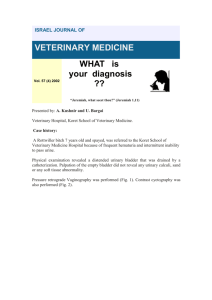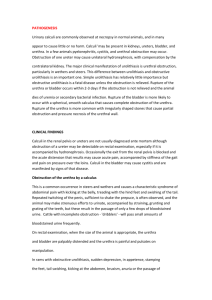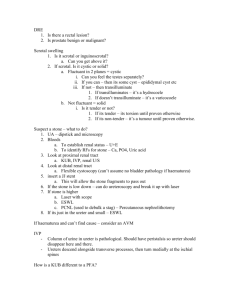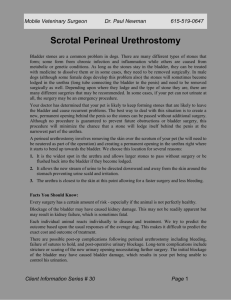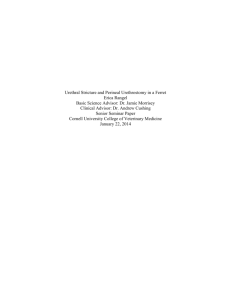Urethral Stricture and Perineal Urethrostomy in a Ferret
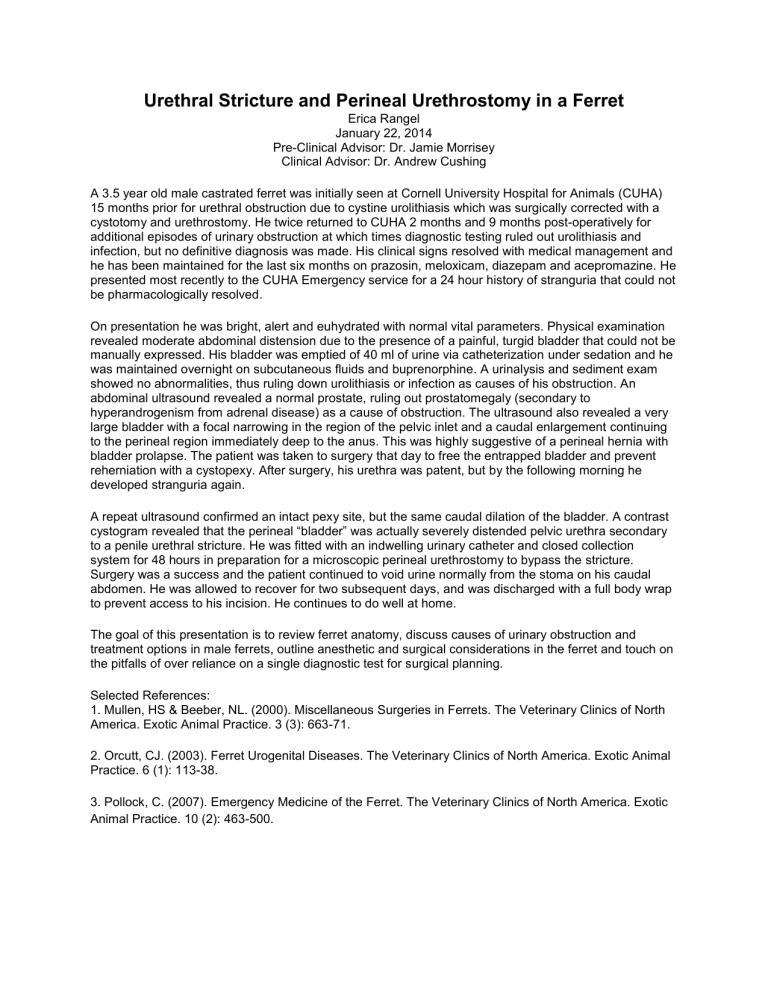
Urethral Stricture and Perineal Urethrostomy in a Ferret
Erica Rangel
January 22, 2014
Pre-Clinical Advisor: Dr. Jamie Morrisey
Clinical Advisor: Dr. Andrew Cushing
A 3.5 year old male castrated ferret was initially seen at Cornell University Hospital for Animals (CUHA)
15 months prior for urethral obstruction due to cystine urolithiasis which was surgically corrected with a cystotomy and urethrostomy. He twice returned to CUHA 2 months and 9 months post-operatively for additional episodes of urinary obstruction at which times diagnostic testing ruled out urolithiasis and infection, but no definitive diagnosis was made. His clinical signs resolved with medical management and he has been maintained for the last six months on prazosin, meloxicam, diazepam and acepromazine. He presented most recently to the CUHA Emergency service for a 24 hour history of stranguria that could not be pharmacologically resolved.
On presentation he was bright, alert and euhydrated with normal vital parameters. Physical examination revealed moderate abdominal distension due to the presence of a painful, turgid bladder that could not be manually expressed. His bladder was emptied of 40 ml of urine via catheterization under sedation and he was maintained overnight on subcutaneous fluids and buprenorphine. A urinalysis and sediment exam showed no abnormalities, thus ruling down urolithiasis or infection as causes of his obstruction. An abdominal ultrasound revealed a normal prostate, ruling out prostatomegaly (secondary to hyperandrogenism from adrenal disease) as a cause of obstruction. The ultrasound also revealed a very large bladder with a focal narrowing in the region of the pelvic inlet and a caudal enlargement continuing to the perineal region immediately deep to the anus. This was highly suggestive of a perineal hernia with bladder prolapse. The patient was taken to surgery that day to free the entrapped bladder and prevent reherniation with a cystopexy. After surgery, his urethra was patent, but by the following morning he developed stranguria again.
A repeat ultrasound confirmed an intact pexy site, but the same caudal dilation of the bladder. A contrast cystogram revealed that the perineal “bladder” was actually severely distended pelvic urethra secondary to a penile urethral stricture. He was fitted with an indwelling urinary catheter and closed collection system for 48 hours in preparation for a microscopic perineal urethrostomy to bypass the stricture.
Surgery was a success and the patient continued to void urine normally from the stoma on his caudal abdomen. He was allowed to recover for two subsequent days, and was discharged with a full body wrap to prevent access to his incision. He continues to do well at home.
The goal of this presentation is to review ferret anatomy, discuss causes of urinary obstruction and treatment options in male ferrets, outline anesthetic and surgical considerations in the ferret and touch on the pitfalls of over reliance on a single diagnostic test for surgical planning.
Selected References:
1. Mullen, HS & Beeber, NL. (2000). Miscellaneous Surgeries in Ferrets. The Veterinary Clinics of North
America. Exotic Animal Practice. 3 (3): 663-71.
2. Orcutt, CJ. (2003). Ferret Urogenital Diseases. The Veterinary Clinics of North America. Exotic Animal
Practice. 6 (1): 113-38.
3. Pollock, C. (2007). Emergency Medicine of the Ferret. The Veterinary Clinics of North America. Exotic
Animal Practice. 10 (2): 463-500.




